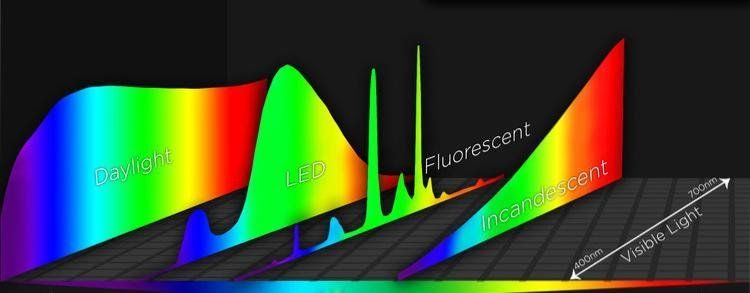120 vs. 220: The Implications of Voltage
These days many LED lamps, especially grow lights, come with the ability to run them at either 120 or even as high as 240 volts. While there may be some benefits to running your lights at a higher voltage, there is a misconception that doing so will result in lower energy costs. And while technically it might, the savings will be negligible. There may be other advantages to running your LEDs at higher voltages, but first, let’s take a look at some definitions.
Volts, amps, and watts
- Voltage or Electric Potential is the amount of electrical energy available at a source such as a plug, breaker, or extension cord—essentially how hard electricity is "pushed" through a wire. Thinking in terms of a water hose, voltage would represent the pressure of the water flowing through it.
- Amperage or Electrical Current is the amount of electricity transferred or moved through a wire or circuit. In a water hose, it would be the volume of the water flowing through it.
- Wattage or Electrical Power is how much "work" the electricity does, such as energizing the diodes in a LED grow Light. Continuing the water hose analogy, if the water exiting the hose hits a paddle wheel, the resulting rotation (work) of the wheel represents the wattage.
In order to determine wattage, you can use this formula: Watts ($) = Volts x Amps. Watts are dependent upon the voltage and amperage, so for a light that requires a certain wattage to function, as you increase the volts, the amperage will be reduced. This is often where the misconception comes into play. People will point to this reduction in amperage to say that you’ll save money because the amperage is half as much when running lights on 220 volts instead of 110 volts. This is true but the utility company doesn't charge you for amperage, they charge you for wattage. They bill you in kilowatt-hour units. A kilowatt-hour is 1000 watts of usage for one hour or approximately equals a 1000 watt light running for one hour.
Ultimately, the only reason you can sometimes save electricity at higher voltages is that most power converters (such as AC/DC converters) get a little more efficient when run at higher voltages. But that small efficiency is often not enough to result in any noticeable savings to your electric bill.
Still, there must be some advantages to running equipment at a higher voltage. If there weren’t, why would manufacturers give you the option?
The key is in halving the amperage. In cases where there isn’t enough available amperage capacity to run all the electrical devices at 110 volts, installing a 240 volt power circuit will drop the amperage and allow more devices to run without tripping a circuit breaker. Circuit breakers prevent wires from overheating and starting fires. To do so they regulate the amps that can flow through the circuit.
Let’s say you have some exterior lighting running on your building and for some reason all your exterior walls are wired to one circuit. Let’s say you’re running standard HID exterior wall packs that require approximately 250W to function on a 120V, 15 A circuit. Using our formula with some basic round numbers here’s what we come up with.
Watts / Volts = Amps
250 / 120 = 2.08
If each wall pack requires just over 2 amps, you could run 7 (in practice, probably closer to 6, but we’re eliminating some variables for the sake of simplicity) of these wall packs on your building’s exterior. One very easy way to both reduce your energy consumption cost and increase the number of lights you can use would be to switch to LED wall packs.
If you’re running 120W LED wall packs on that same 120V, 15A circuit.
Watts / Volts = Amps
120 / 120 = 1
You could run 15 wall packs (again, in practice, probably closer to 14) before tripping the breaker. That might be enough light, but what if you still wind up with unlit areas outside your building? One way to handle the problem would be to split up your exterior walls into more than one breaker, but for the sake of this example, let’s say that’s not possible. Another solution would be to install a 240V circuit.
Watts / Volts = Amps
120 W / 240 V = 0.5 A
By running the same lights on 240 volts, you halve the amperage and are therefore able to run twice as many lamps on the same circuit. This example admittedly stretches credulity, but replace our idea of exterior wall packs with LED grow lamps, for example, and you can see where boosting voltage might make sense as far as capacity is concerned. A large indoor garden may call for dozens of lights, which, if using a 110V system, will max out the available amperage much more quickly than they would on a 240V circuit.
It’s worth noting that running electrical motors and non-digital ballasts on 240 volts is one of the most common forms of wasted energy. These motors and ballasts convert any excess energy into heat and since the lamps themselves will always draw the same wattage, any excess energy is lost to heat, which is why ballasts can be hot to the touch.
Anothing thing to consider is that boosting your voltage and dropping your amperage means you’ll be able to run more lights, which means you’ll be pulling more wattage, and therefore driving your energy bill higher.





